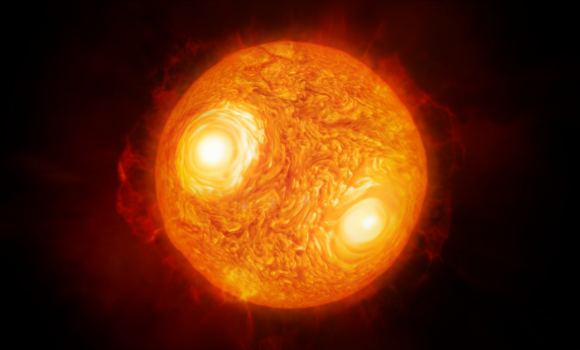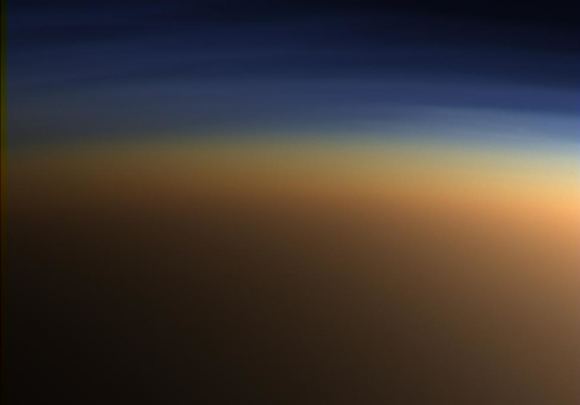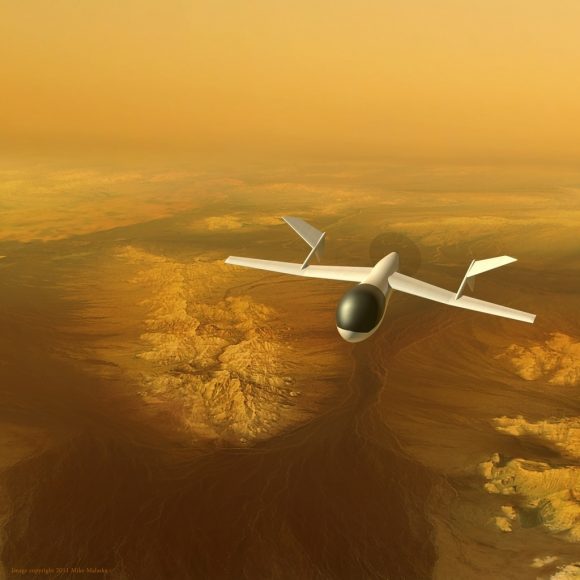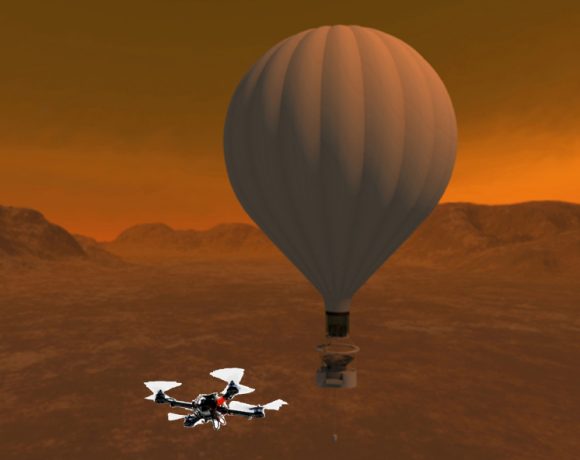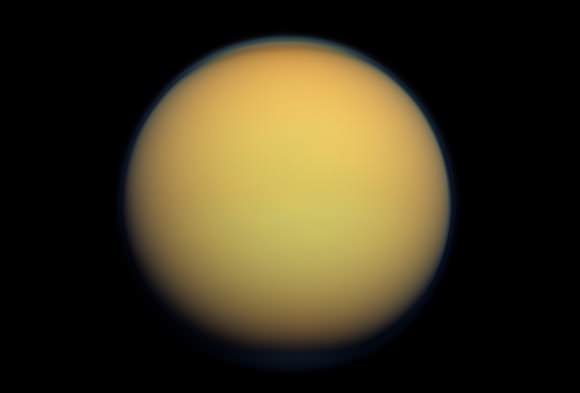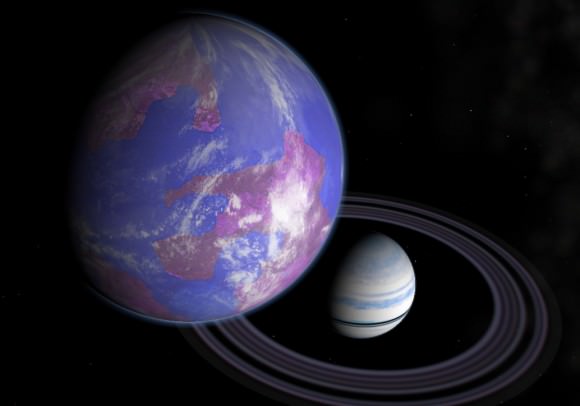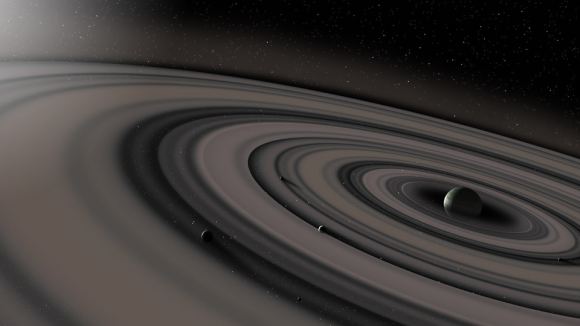The total solar eclipse of 2016 taken from a NASA webcast on March 8, 2016. The image was taken from Woleai Island in Micronesia. The next total solar eclipse will cross the entire continental U.S. on Aug. 21, 2017.
Editor's note: This story was originally posted on Feb. 2 and was updated on Aug. 19 with new resource links for eye safety during the 2017 total solar eclipse.
We're just days away from
the total solar eclipse of Aug. 21 and it's a good time for a refresher course on how to safely observe the event. Your parents probably told you to NEVER look directly at the sun with your naked eye. In fact, you've probably been told that by lots of reputable sources (
including our own Space.com). But according to NASA and four other science and medical organizations, it's OK to look at a total solar eclipse with the naked eye —
but only when the face of the sun is totally obscured by the moon.
A total solar eclipse happens when the central disk of the sun is completely covered by the moon. Many people have probably seen a
partial solar eclipse, in which the disk of the moon appears to take a bite out of the sun's disk, but never fully obscures it. But
total solar eclipses are
a much rarer sight. And on Monday, a total solar eclipse will
cross the continental U.S. from coast to coast.
A
joint statement from NASA and the four other organizations says that with the right information, skywatchers can safely view the total solar eclipse in its full glory with the naked eye.
Solar Eclipse Glasses: Where to Buy the Best, High-Quality Eyewear
What To Do If Your Solar Eclipse Glasses Won't Arrive in Time
How to Tell if Your Eclipse Glasses Are Unsafe - and What To Do About It
Fake Solar Eclipse Glasses Are Flooding the Market: How to Stay Safe
Anyone in the United States on Aug. 21, 2017, will be able to see at least a partial solar eclipse (weather permitting, of course). But only those people in what's known as the "
path of totality" will see a total solar eclipse. For the Aug. 21 eclipse, the path of totality is about 70 miles wide (112 kilometers), and
extends from Oregon to South Carolina. Depending on where observers are located, the sun may be completely obscured by the moon
for up to 2 minutes and 40 seconds.
The path of the total solar eclipse of 2017. Locations within the path of totality will experience up to 2 minutes and 40 seconds of darkness.
Credit: NASA
"During those brief moments when the moon completely blocks the sun's bright face …
day will turn into night, making visible the otherwise hidden solar corona (the sun's outer atmosphere)," according to
NASA's Eclipse website. "
Bright stars and planets will become visible as well. This is truly one of nature's most awesome sights."
But in order to see this awesome natural sight, skywatchers need to know how to view the eclipse safely. In an effort to inform the public on this topic, an information guide on safe viewing
has been written up and released by NASA, along with the American Astronomical Society (AAS), the American Academy of Ophthalmology, the American Academy of Optometry and the National Science Foundation.
Eye protection for looking at the sun
Looking directly at the sun without eye protection can cause serious eye damage or blindness. But there are
ways to safely observe the sun. During a partial solar eclipse, people often use pinhole cameras to watch the progress of the moon across the sun's surface (pinhole cameras are
easy to make at home). This is an "indirect" way of observing the sun, because the viewer sees only a projection of the sun and the moon.
To view the sun directly (
and safely), use
"solar-viewing glasses" or "eclipse glasses" or "personal solar filters" (these are all names for the same thing), according to the safety recommendations from NASA. The "lenses" of solar-viewing glasses are made from special-purpose solar filters that are hundreds of thousands of times darker than regular sunglasses, according to Rick Fienberg, press officer for the American Astronomical Society (AAS). These glasses are so dark that the face of the sun should be the only thing visible through them, Fienberg said. Solar-viewing glasses can be used to view a solar eclipse, or to look for sunspots on the sun's surface.
But beware! NASA and the AAS recommend that solar-viewing or eclipse glasses meet the current international standard: ISO 12312-2. Some older solar-viewing glasses may meet previous standards for eye protection, but not the new international standard, Fienberg said.
"
Manufacturers that meet this standard include
Rainbow Symphony,
American Paper Optics and
Thousand Oaks Optical," according to the information sheet on safe eclipse viewing. (Click any of the company links to find out how to purchase eclipse glasses). "Homemade filters or ordinary sunglasses, even very dark ones, are not safe for looking at the sun."
Fienberg said some manufacturers are making solar-viewing glasses with plastic frames, rather than the traditional paper frames. While these may look like regular sunglasses, do not be mistaken. Sunglasses are never a substitute for solar-viewing glasses. Fienberg said some people may even try to view the sun through two or three pairs of sunglasses in an attempt to replicate the protective power of real solar-viewing glasses; however, even multiple pairs of sunglasses will not protect your eyes from sun damage.
Telescopes, cameras, binoculars and other optical devices need their own solar filters.
Solar-viewing glasses are not a substitute for a proper solar filter on magnification devices. Never view the disk of the sun through a telescope, binoculars or camera without a proper solar filter. Solar-viewing glasses are not powerful enough to protect your eyes from
magnified sunlight. Even if you are wearing solar-viewing glasses, viewing the disk of the sun through a magnification device will result in serious eye damage if the device is not equipped with a proper solar filter, according to the viewing safety sheet.
"The concentrated solar rays will damage the filter and enter your eye(s), causing serious injury," according to the safety recommendations. "Seek expert advice from an astronomer before using a solar filter with a camera, a telescope, binoculars, or any other optical device."
Fienberg said there is no need for skywatchers to use a telescope during the eclipse, but a pair of binoculars can be helpful during totality. But, as per the recommendations,
do not attempt to look at the disk of the sun through binoculars, even with solar-viewing glasses.
The safety sheet offers these tips regarding solar filters/eclipse glasses/solar viewers:
- Always inspect your solar filter before use; if scratched or damaged, discard it. Read and follow any instructions printed on or packaged with the filter. Always supervise children using solar filters.
- Stand still and cover your eyes with your eclipse glasses or solar viewer before looking up at the bright sun. After glancing at the sun, turn away and remove your filter — do not remove it while looking at the sun.
- Do not look at the uneclipsed or partially eclipsed sun through an unfiltered camera, telescope, binoculars or other optical device.
Safety during totality
Now that you have some general information about how to view the sun safely, here are NASA and the AAS's recommendations for how to safely view the total solar eclipse with the naked eye. Again, these tips come from
NASA's safety information sheet here.
Viewers who are looking at the eclipse with solar-viewing glasses will be able to see when the sun's face is completely obscured by the moon (because, once again, the only light that can penetrate these solar-viewing glasses is the light from the sun's disk). Viewers will be able to observe the moon creep slowly over the sun's disk and
eventually cover the sun entirely.
In the moments before totality, viewers looking through their solar-viewing glasses will see a crescent of light from the sun growing thinner and thinner as the moon progresses over its face. In the last few seconds just before the disk of the sun is entirely covered by the moon, the crescent will break up into a series of small dots of light that look like beads on a string (typically there are about three to eight such dots, according to Fienberg). These are called
Baily's beads (after Francis Baily, the British astronomer who discovered them). Once the last bead disappears, the face of the sun has been covered by the moon, and totality has begun. [
Solar Eclipses: An Observer's Guide (Infographic)]
"If you are within the path of totality, remove your solar filter only when the moon completely covers the sun's bright face," according to the official safety information sheet.
This image from NASA shows that the only time it is safe to remove your eye protection during a total solar eclipse is when the disk of the sun is entirely covered by the moon.
Credit: NASA
The safety information sheet also recommends that viewers be aware of another drastic change that takes place during a total solar eclipse:
light levels drop dramatically, as if the world has suddenly been plunged into dusk. This is one indicator that totality has begun, and it is safe to take off your eclipse glasses.
When should you put your glasses back on? The official recommendations from the agencies suggest that viewers put their solar-viewing glasses back on before any part of the sun's disk becomes visible again.
"Experience totality, then, as soon as the bright sun begins to reappear, replace your solar viewer to glance at the remaining partial phases," the information sheet said.
In order to anticipate when the disk of the sun will reappear, viewers should first be aware of about how long the total eclipse should last where they are standing — the total eclipse will last, at most, about 2 minutes and 40 seconds. The nearer that viewers are to the edge of the path of totality, the shorter the total eclipse will be. Viewers who want to observe the total solar eclipse with the naked eye should try to move closer to the center of the path, so there is ample time to observe the eclipse safely.
Fienberg said that viewers should be aware of the moon moving across the surface of the sun during totality. The side of the sun that was the last to disappear behind the moon will be opposite to the side that is first to reappear. On the side of the moon where the sun will reappear first, viewers should look out for the "reddish hue" of the chromosphere, the layer of the sun's atmosphere that is closest to its surface. The sun will begin to reappear just as it disappeared — first as dots of light. If a dot of sunlight appears on the edge of the moon, it means totality is complete.
Baily's beads and diamond rings
The AAS and NASA are
expecting huge crowds to flock to the path of totality for the 2017 total solar eclipse, including more experienced eclipse watchers. These seasoned observers may start shouting "Baily's beads!" when the spots of light appear at the edge of the moon. As the eclipse nears totality, people may also shout "Diamond ring!" Fienberg explains that when only one "bead" is still visible at the edge of the moon just before totality, it will glow like a diamond, and the red corona of the sun will create a circular band of light. Together, they will
look like a diamond ring.
Experienced observers may decide to look at the eclipse with the naked eye just before the sun is completely covered by the moon, when the diamond ring appears.
"If you're in a group you'll hear people start screaming 'Diamond ring! Diamond ring! Filters off!'" Fienberg said. "If you're paying strict attention to the recommendation that you should not look at the sun without a filter, when any part of the bright face is still visible, you'll wonder if all those people are going blind, but they're not. The reason they're not is because it only lasts a second or so, and then it's gone and you see the corona, and its dark and its spectacular and beautiful."
While you may see some people removing their solar-viewing glasses before the eclipse reaches totality, this is not recommended by the official eclipse-viewing guide from NASA and the AAS.
What you'll see during a total solar eclipse
While Fienberg is adamant about eclipse-viewing safety, he is equally insistent that skywatchers should view the total solar eclipse with the naked eye, because the experience is like nothing else on Earth.
The sun's atmosphere "is always there but we can't see it," Fienberg said. "Satellites in orbit that block out the bright disk of the sun can see it, but from ground, we don't see it except during totality. And it is just magnificently beautiful. It's awesome in the truest sense of the word. It just makes your jaw drop. The first time you see it you just can't believe how beautiful it is. And it brings tears to people's eyes."
This composite image captures close to what the human eye sees during a total solar eclipse. The ribbons of light are the sun's atmosphere, which is controlled by the magnetic field.
Credit: NASA/S. Habbal, M. Druckmüller and P. Aniol
The sun's atmosphere isn't a uniform haze like the Earth's atmosphere, Fienberg said. It's "a tangle of streamers and jets and loops and twists and all kinds of stuff because its controlled entirely by the sun's magnetic field, which is very tangled and twisted."
The chromosphere, the atmosphere closest to the sun's surface, "is an unbelievably beautiful, pure magenta-red color. If the chromosphere is active and there are eruptions going on on the edge of the sun, you'll see prominences — they look like flames or jets of this really beautiful hot-pink magenta gas that are extending out beyond the silhouette of the moon," he said.
None of these features will be visible to viewers wearing eclipse glasses.
Fienberg is an eclipse chaser; he has traveled all over the world to see total solar eclipses. On his very first eclipse-viewing trip, before seeing the event, he met a man who hosted a music radio show in the city where Fienberg lives. The radio host was an eclipse chaser, and Fienberg said he'd never heard the host talk about astronomy on his show.
"I'm not interested in astronomy," the man told Fienberg. "I'm interested in beauty."
"That that told me right then on my first trip, this isn't just about astronomy," Fienberg said. "This is about beauty. This about being out in nature and being one with the universe — I mean it sounds silly! But you really feel like you're just part of it all and you're privileged to be able to see such a beautiful thing."
The unified message from Fienberg, NASA, the AAS and many other sources regarding the upcoming eclipse: Observe safely, and get to the path of totality on Aug. 21, 2017!
Follow Calla Cofield @callacofield. Follow us @Spacedotcom, Facebook and Google+. Original article on Space.com.
